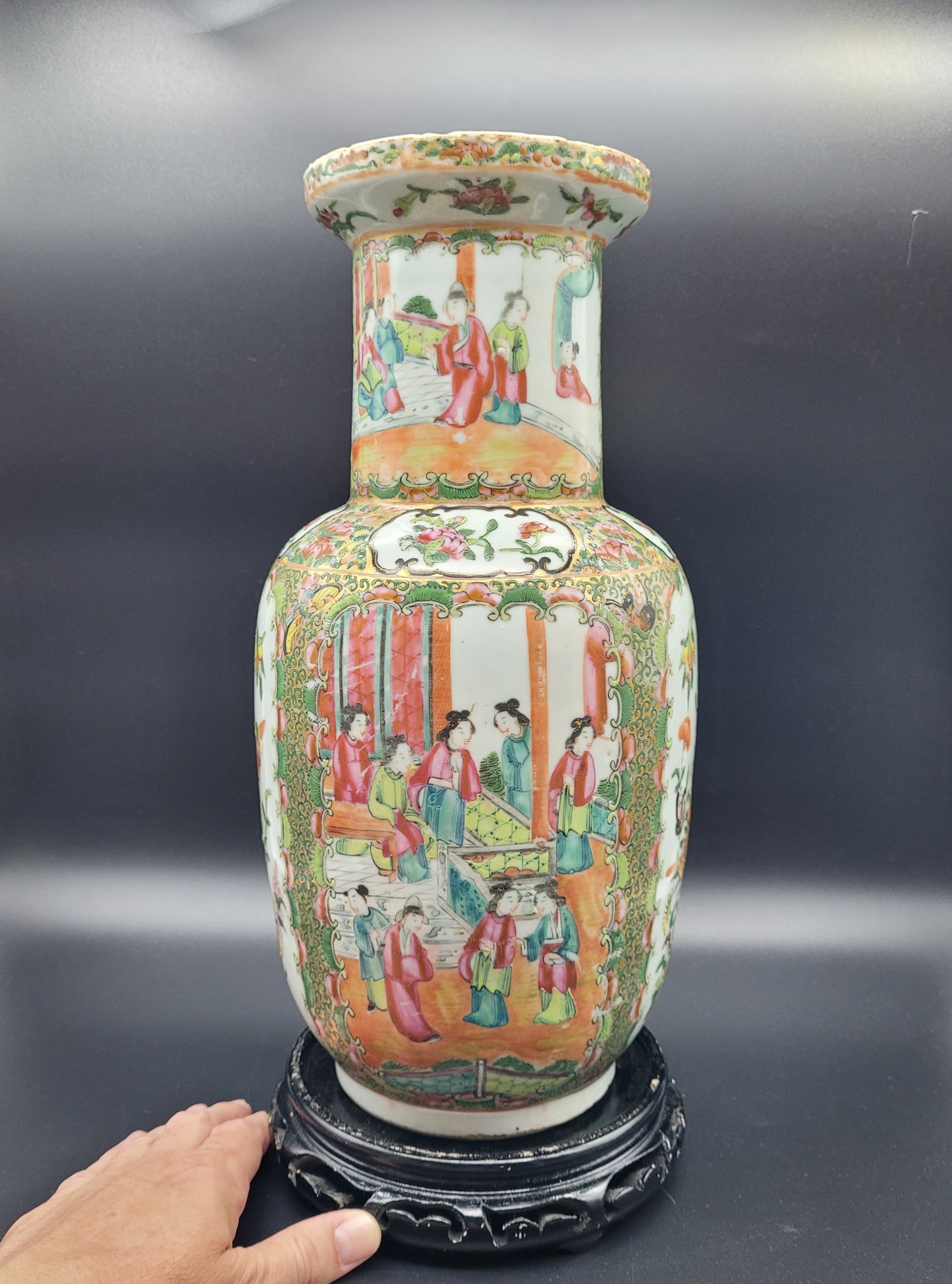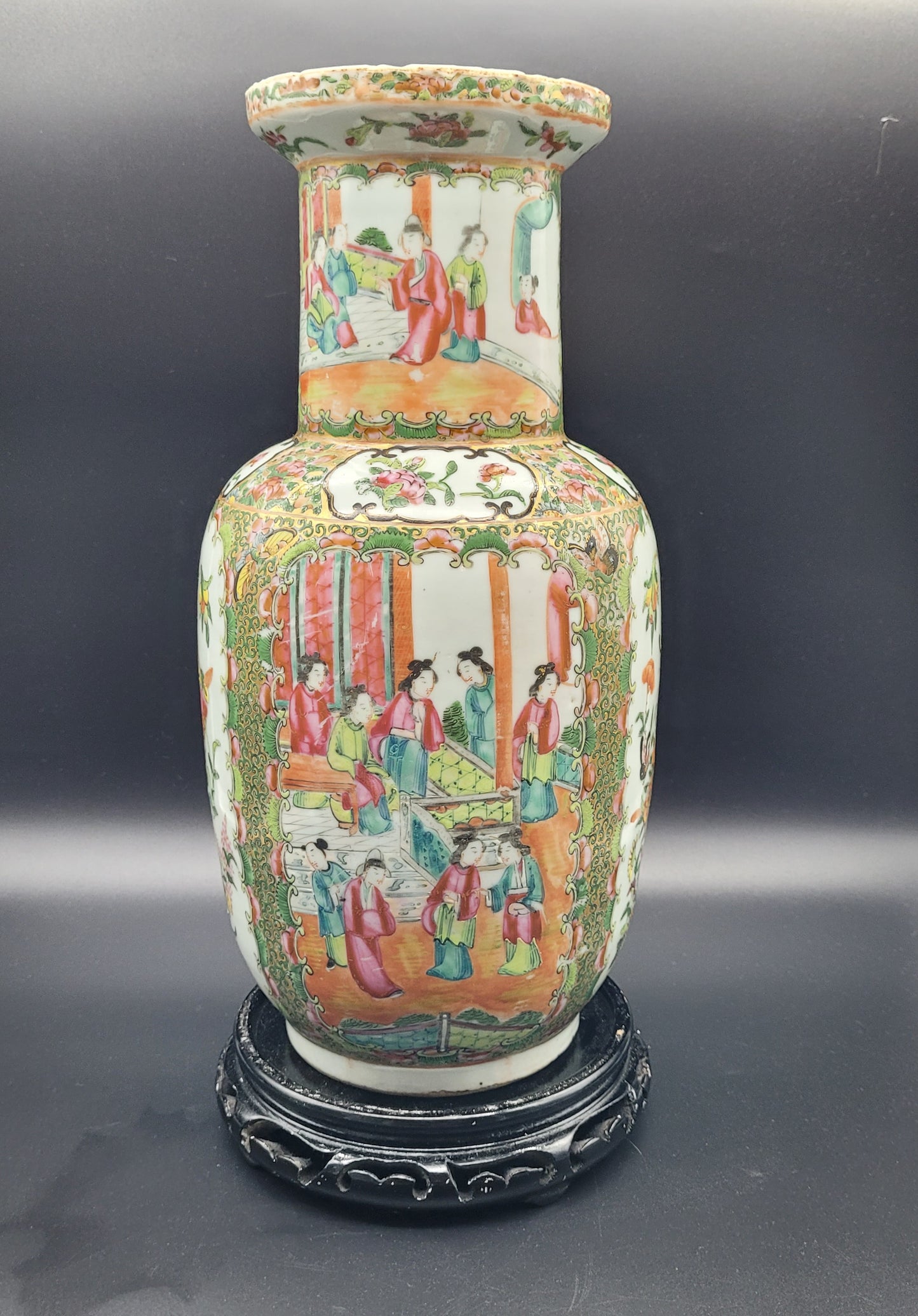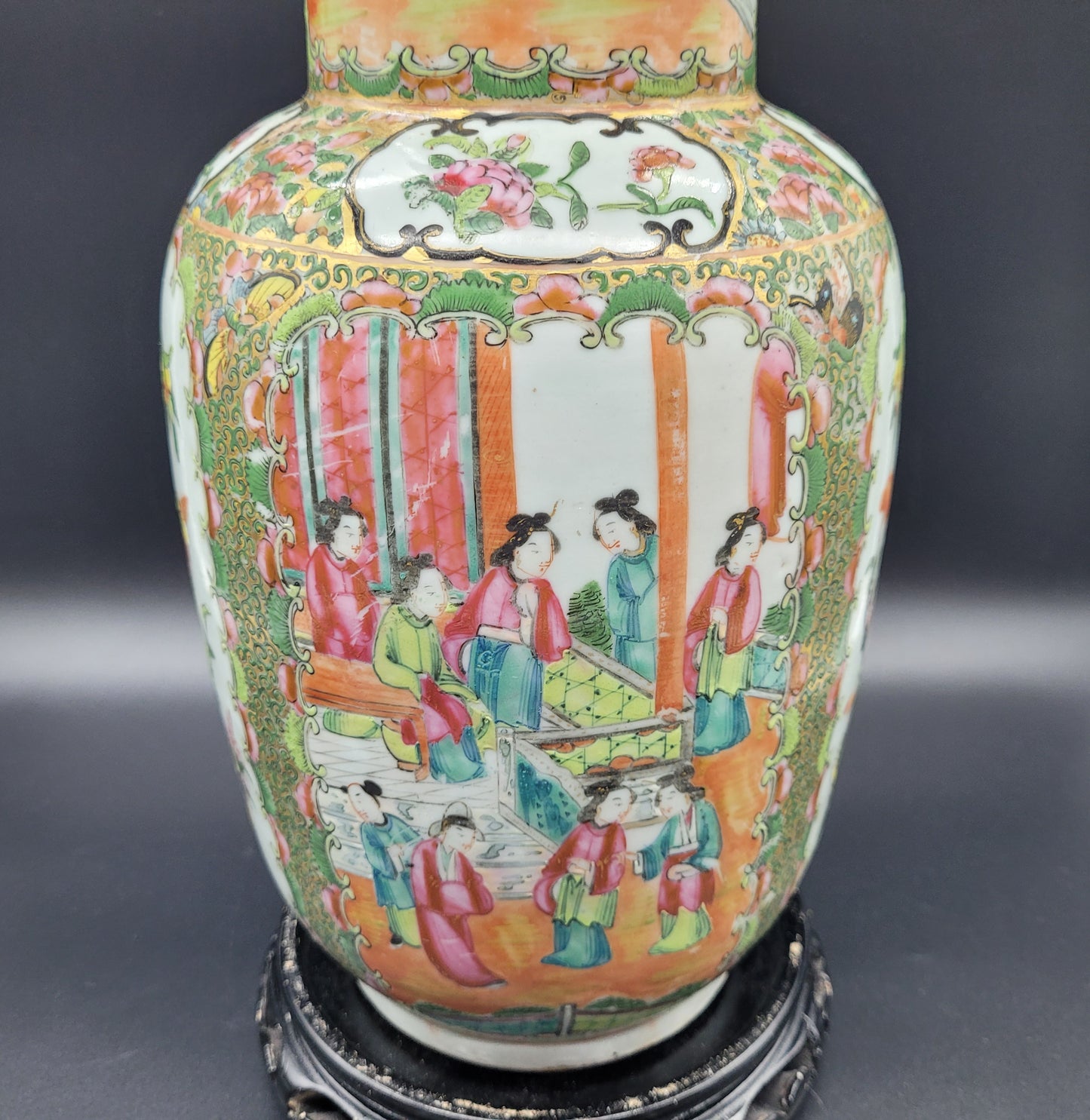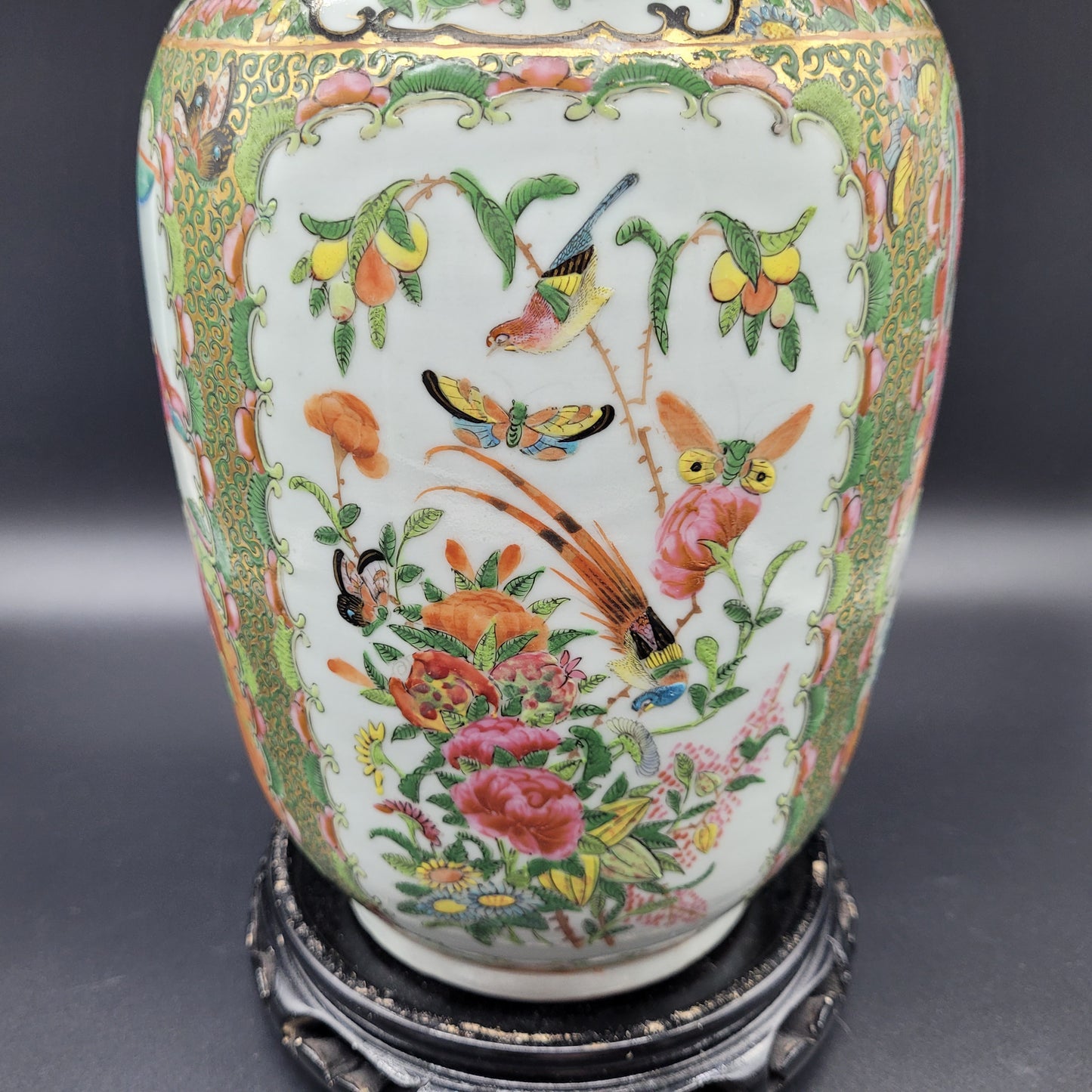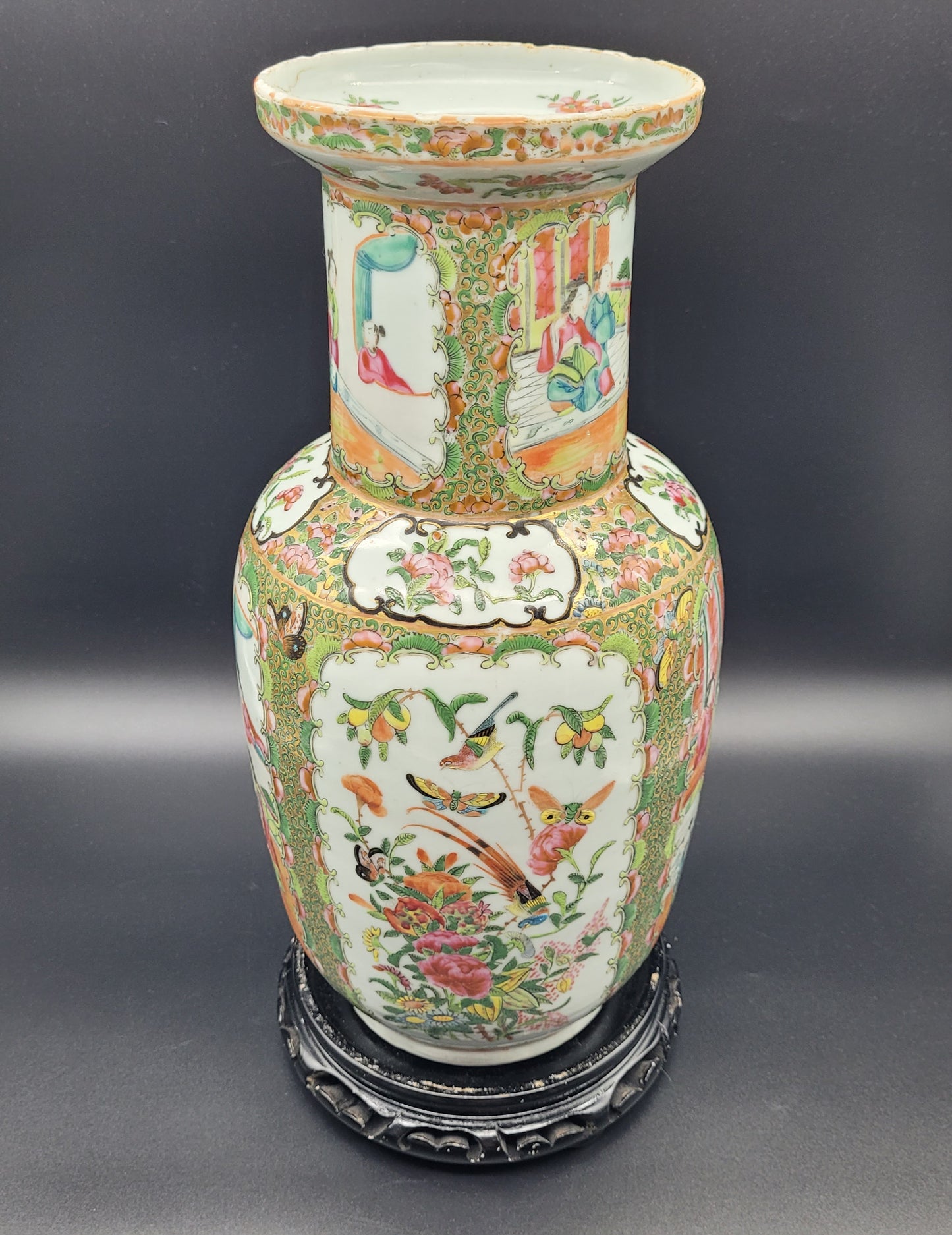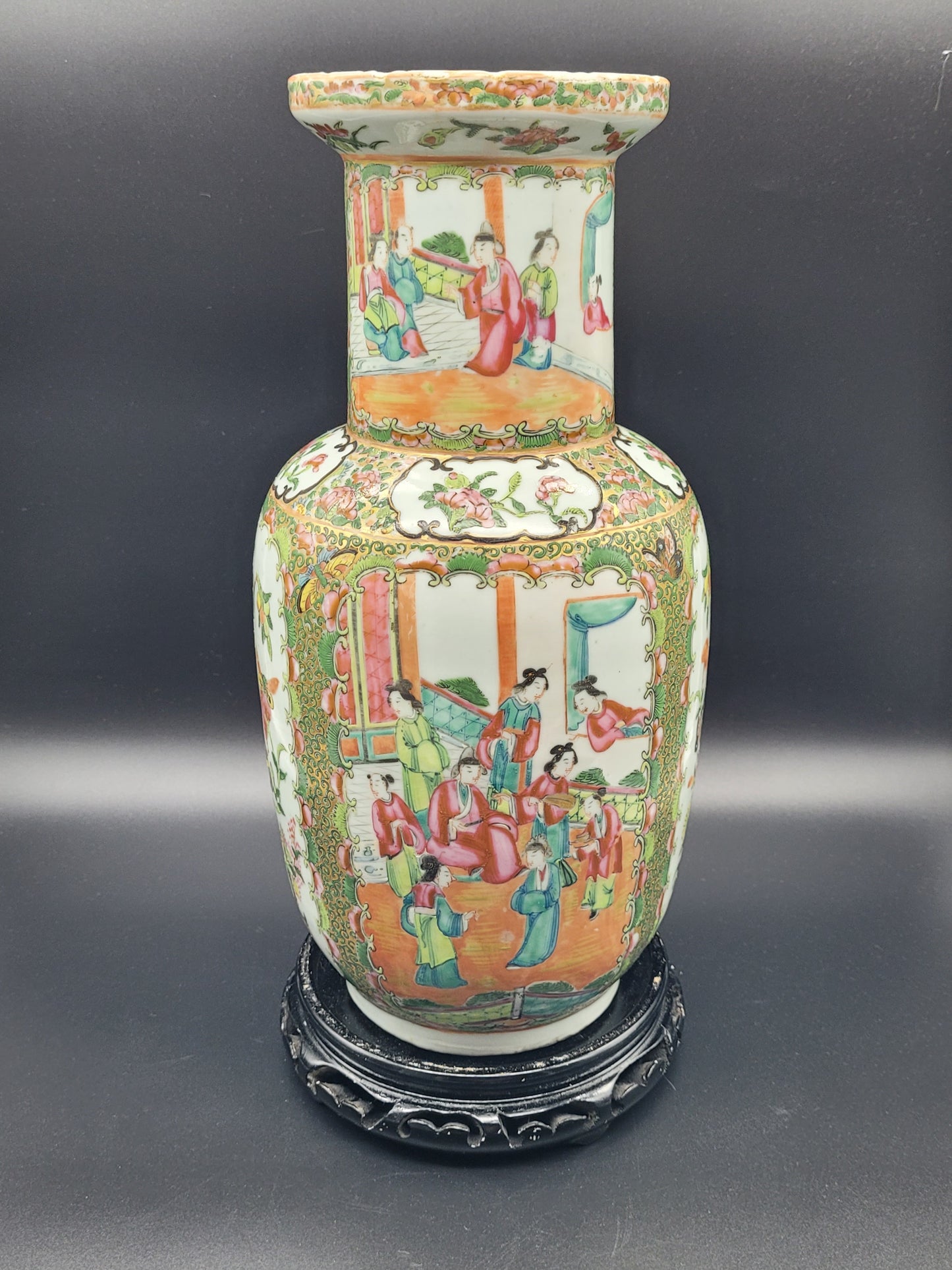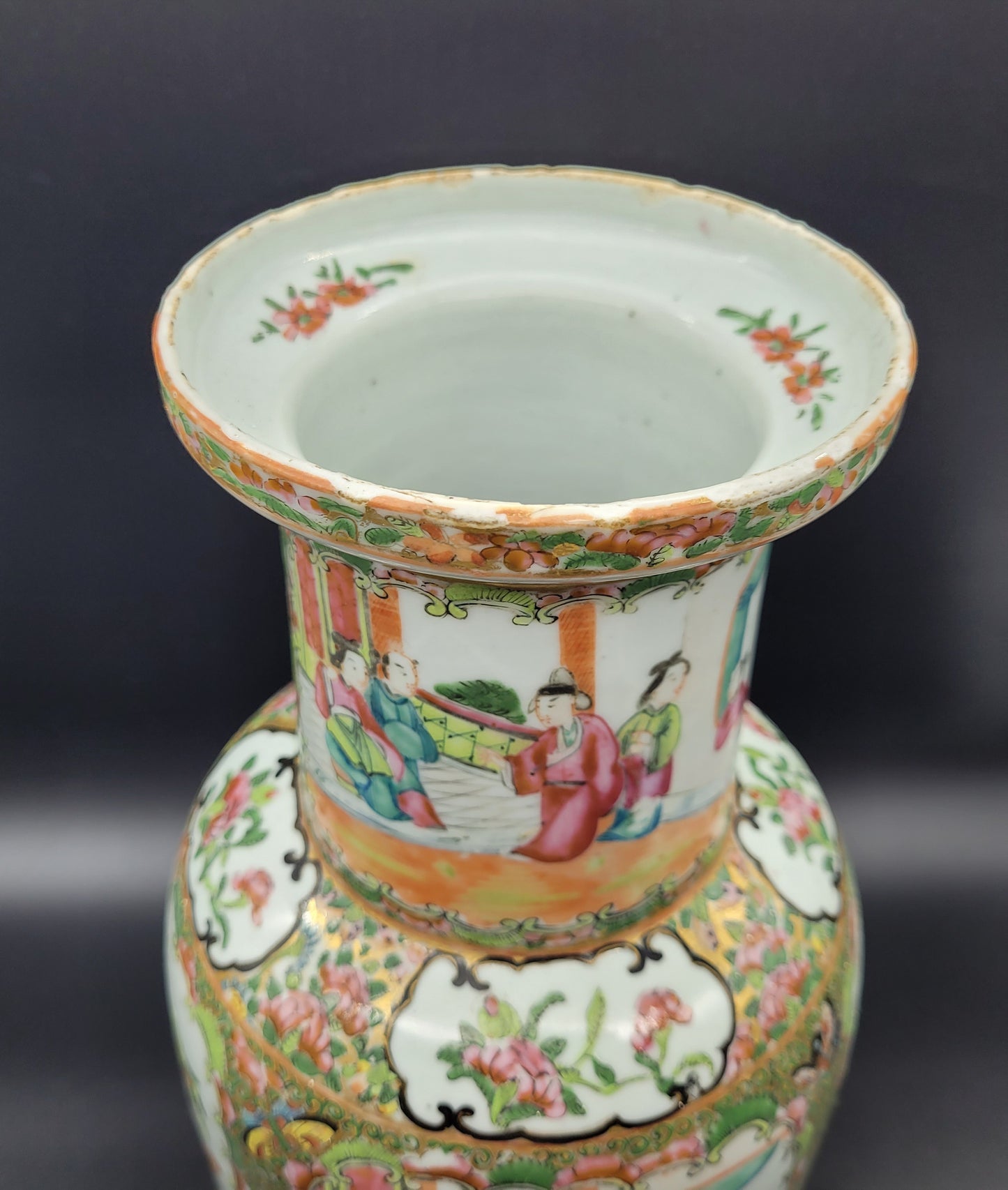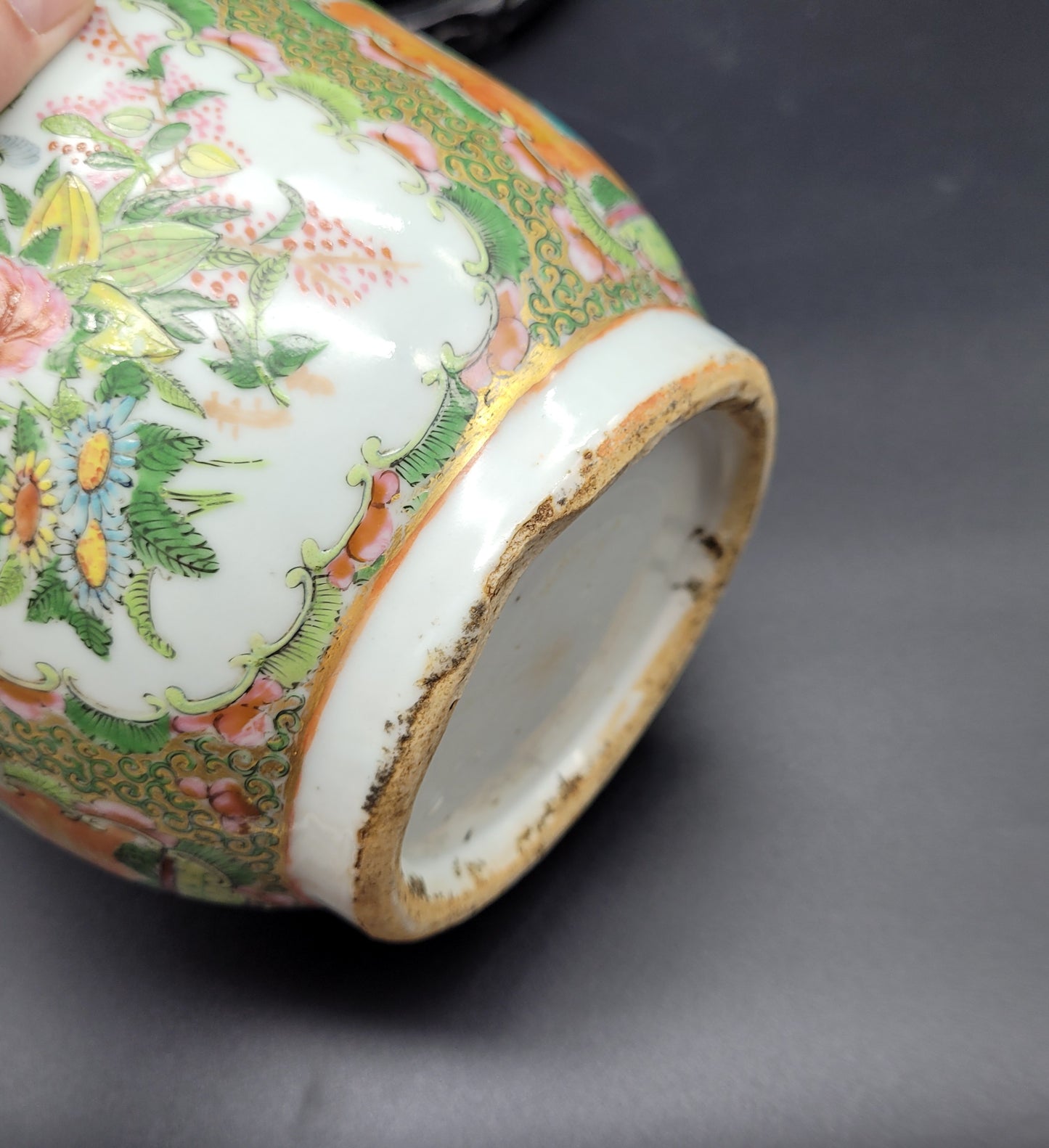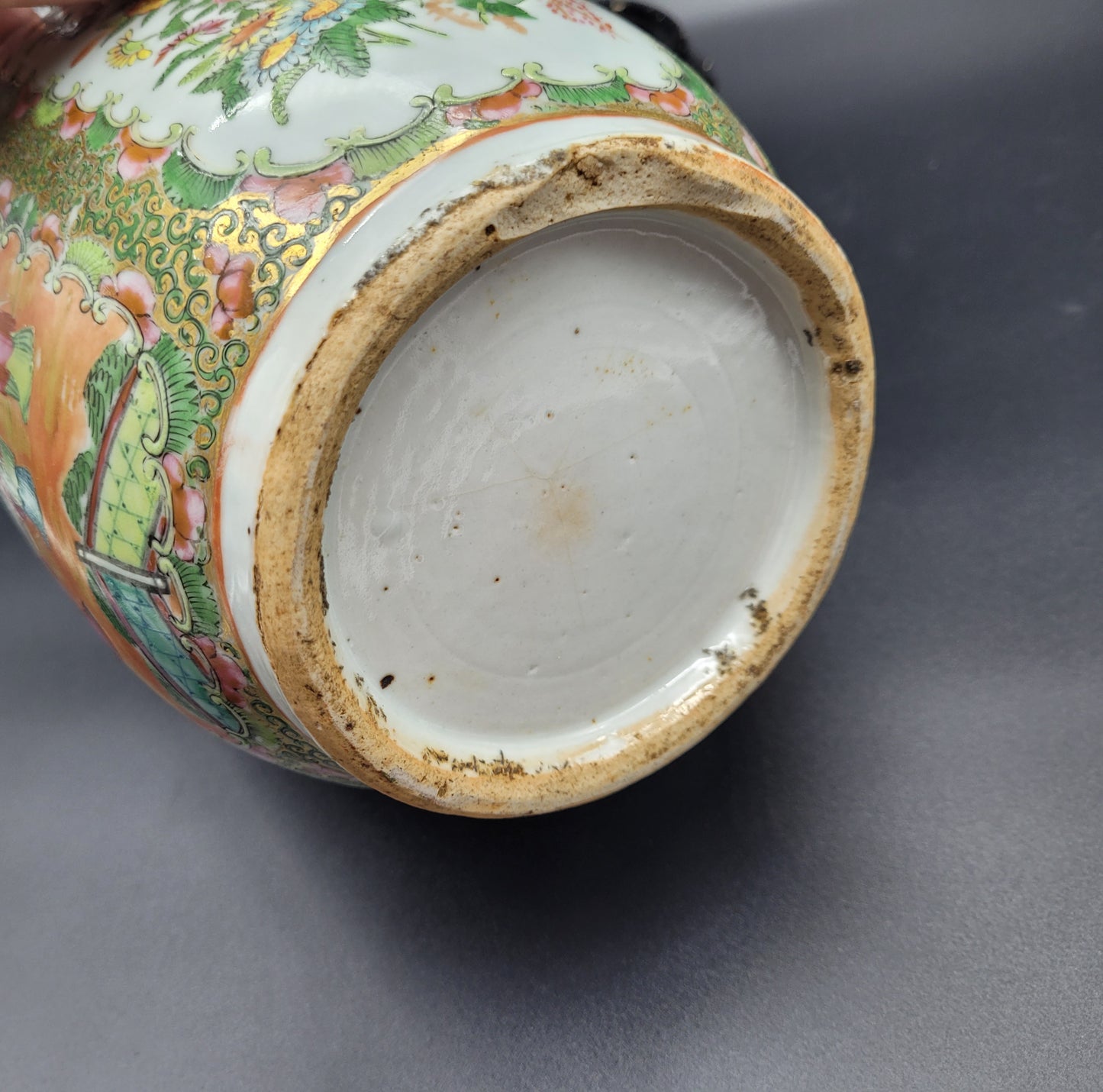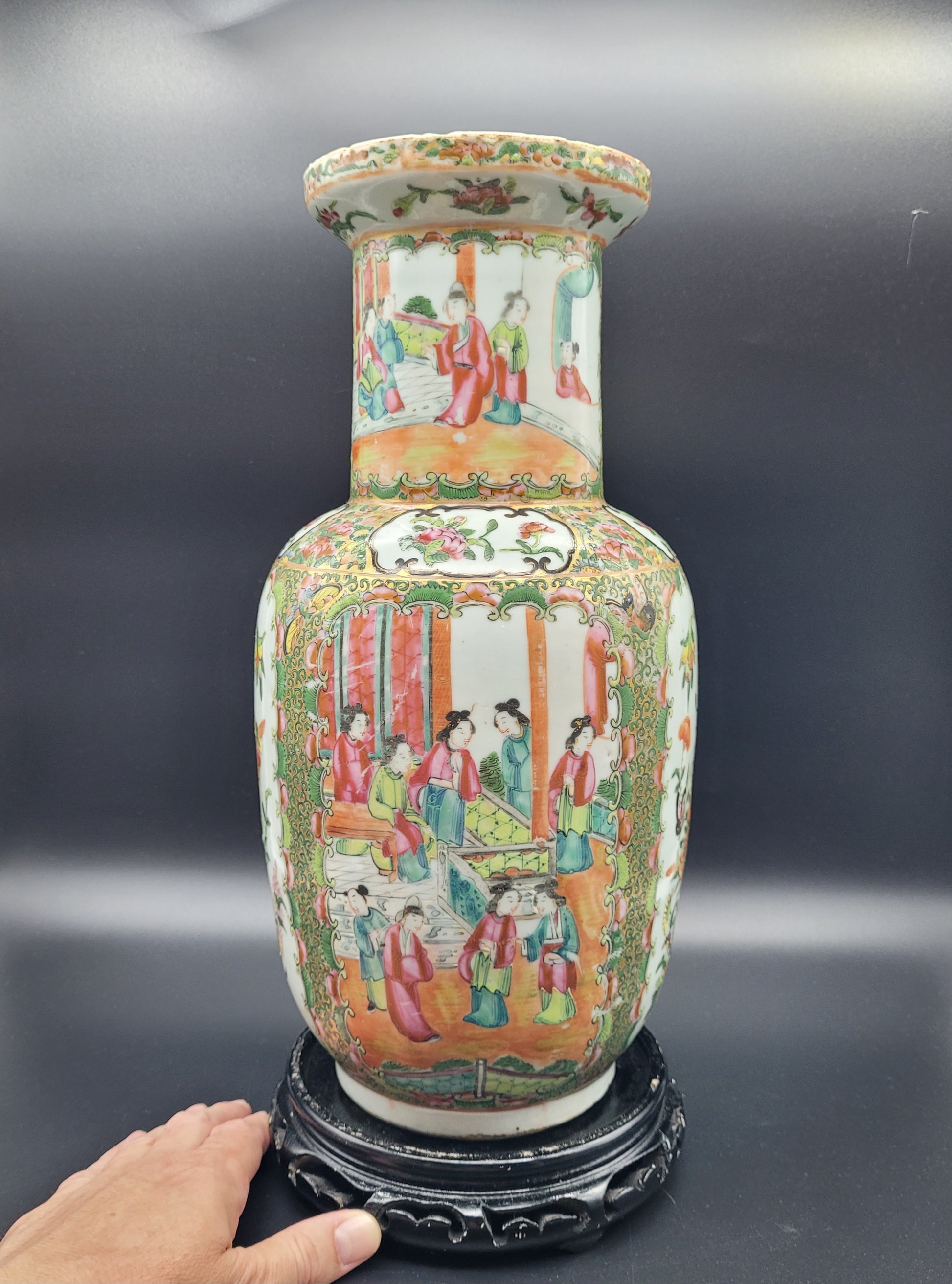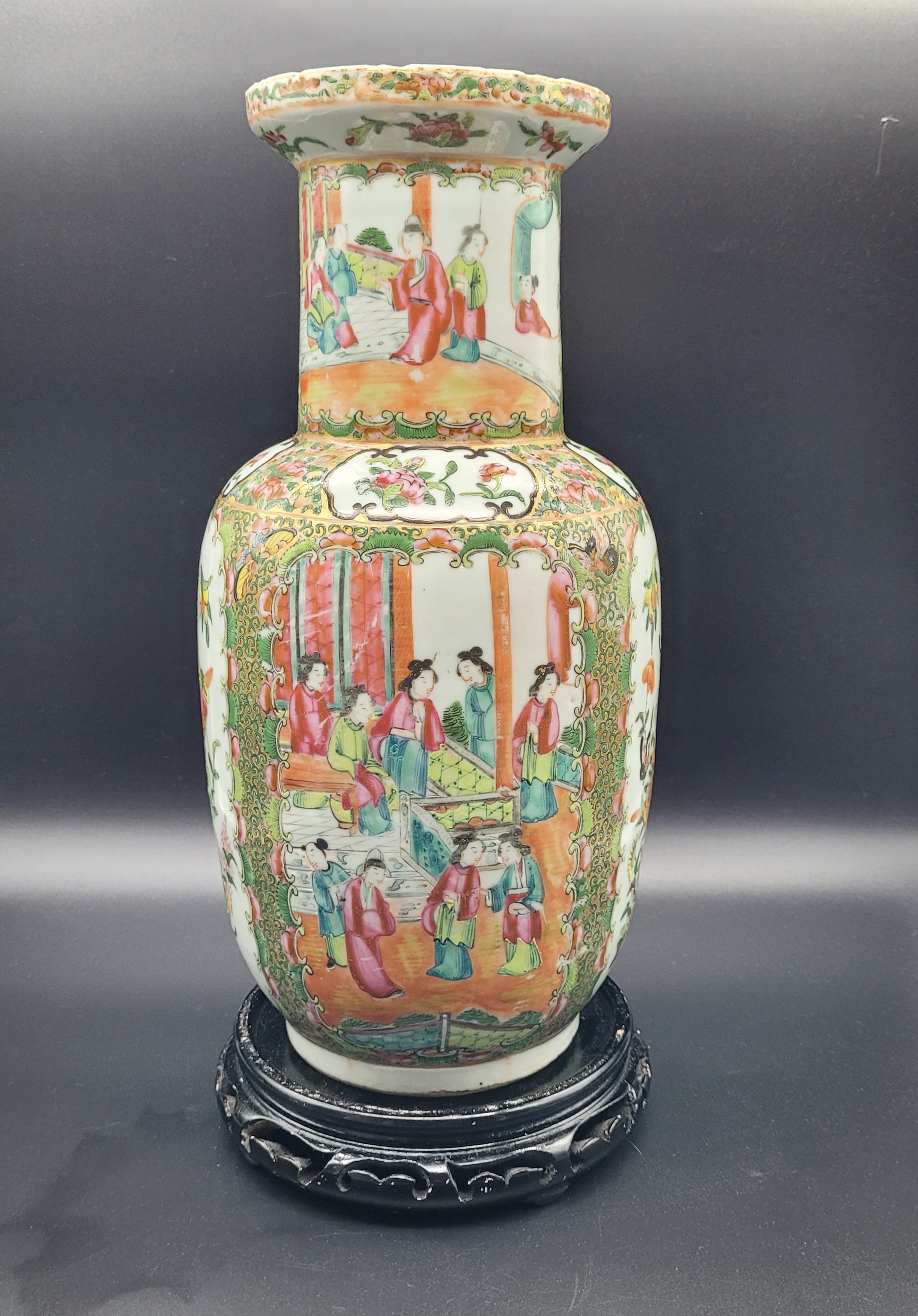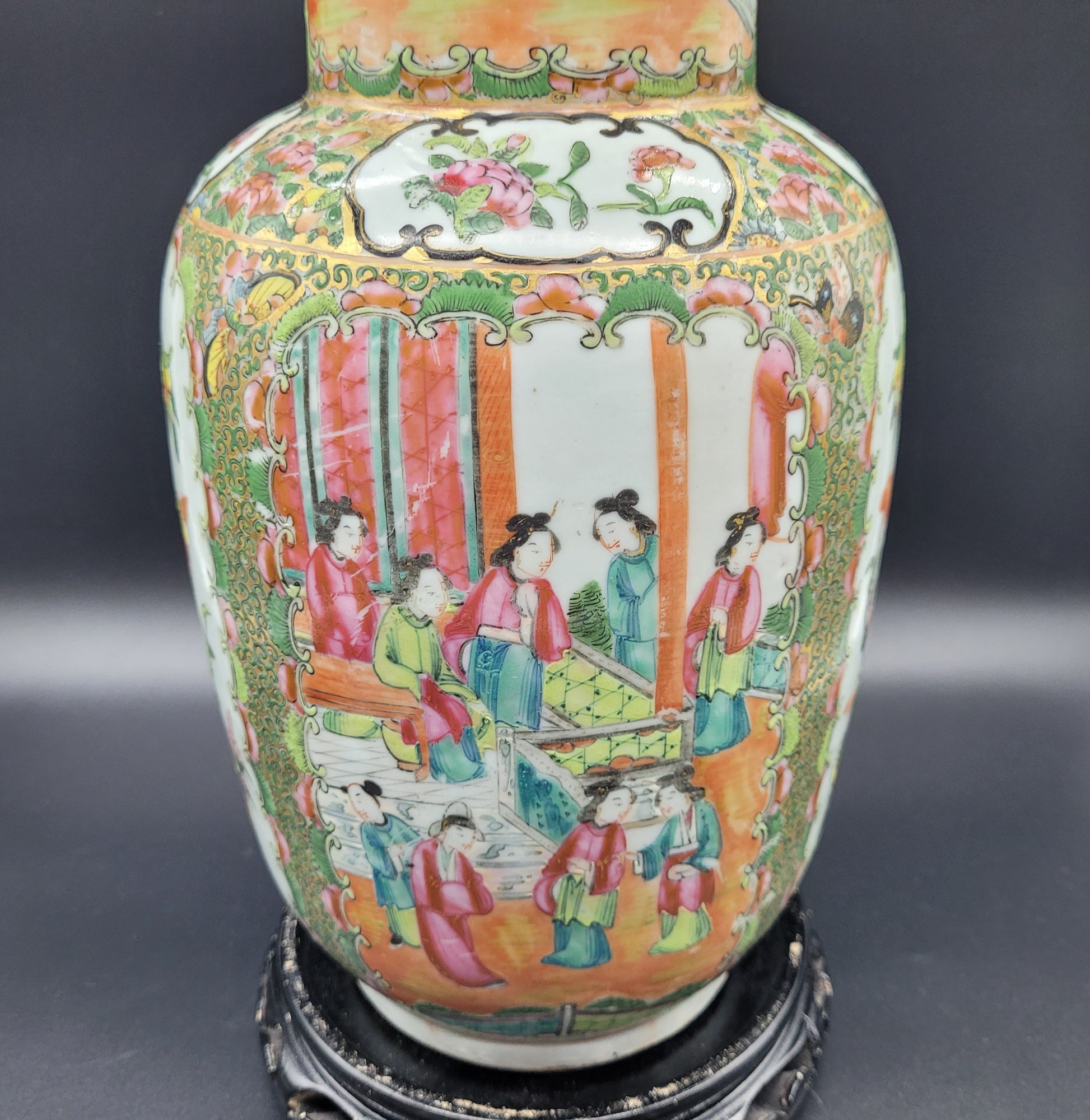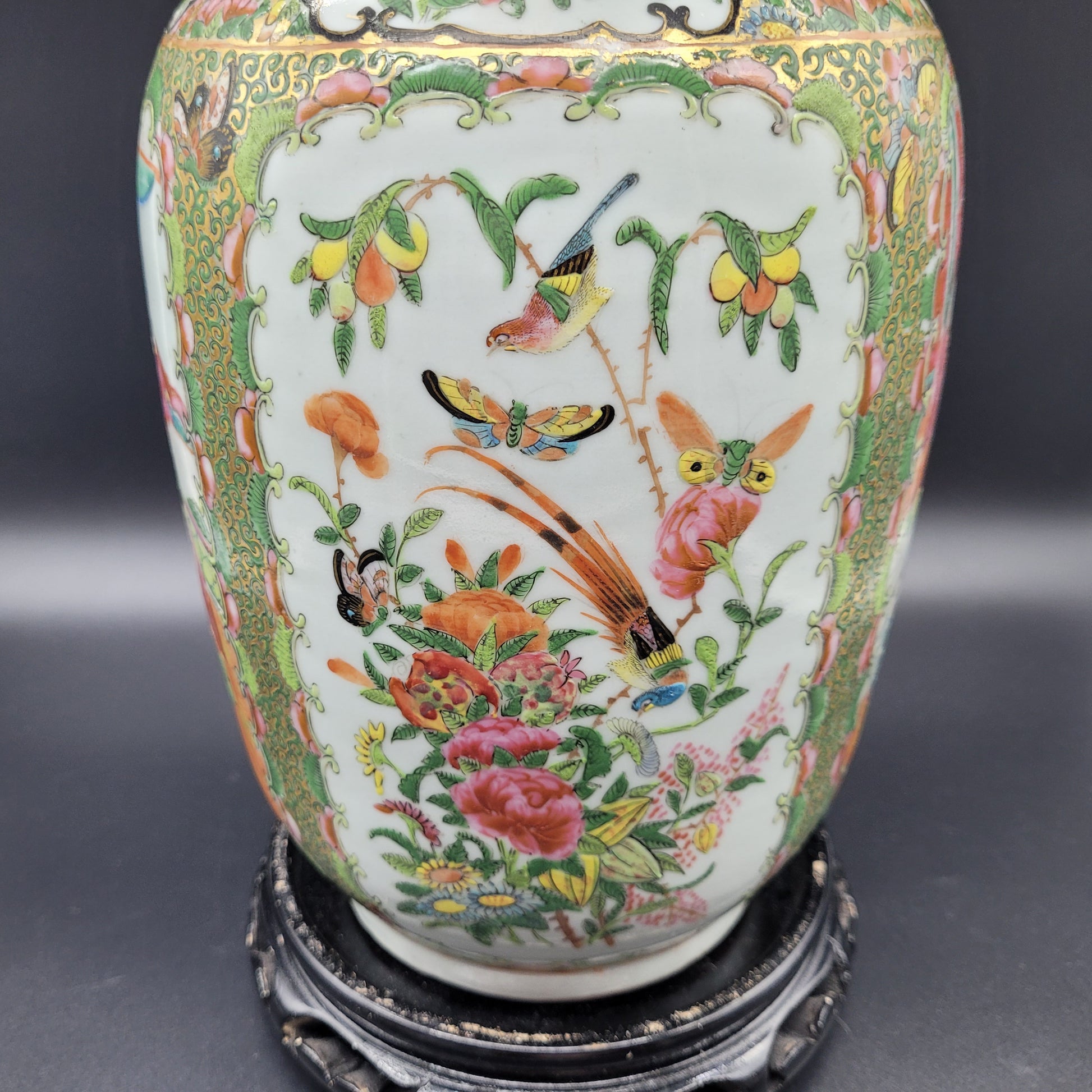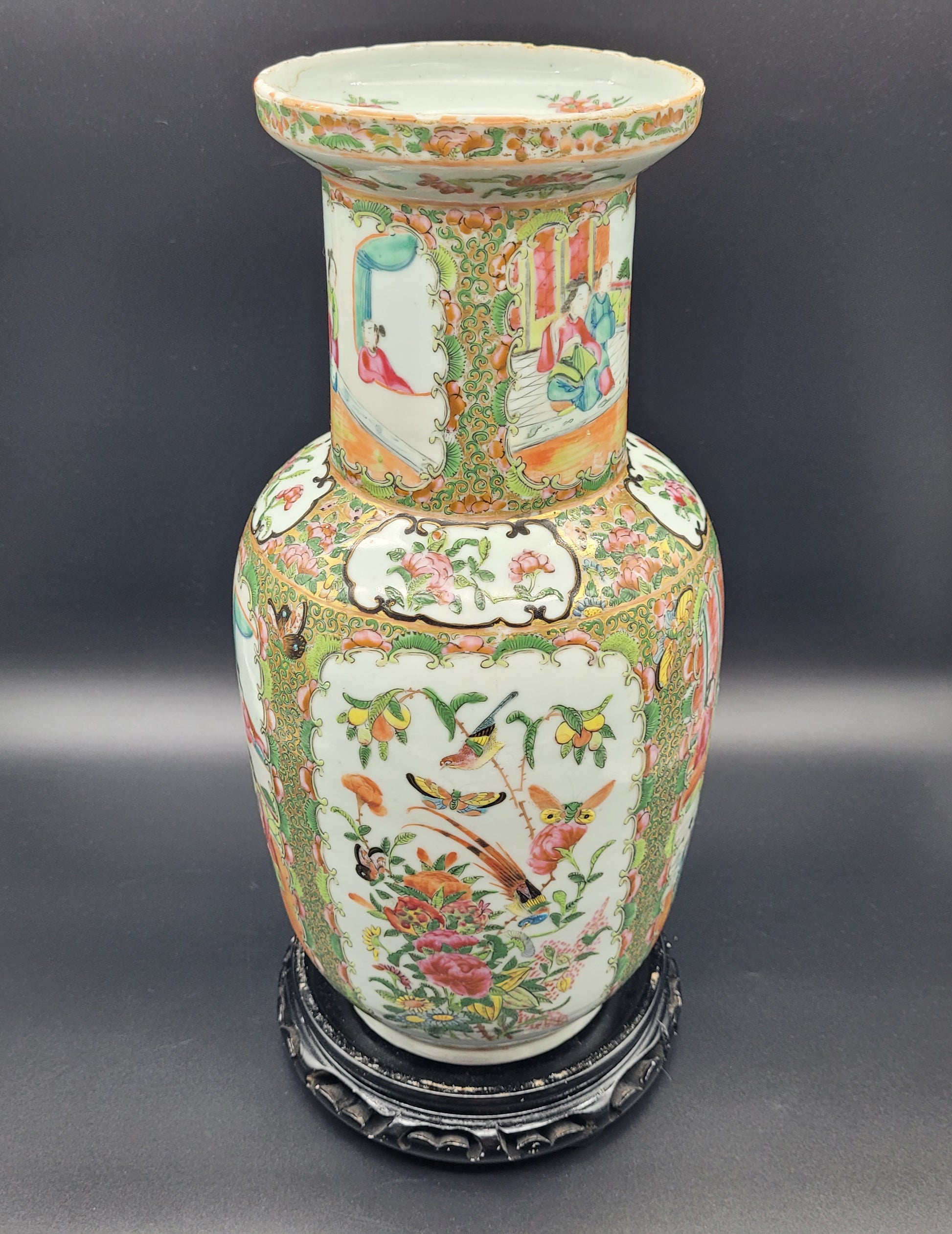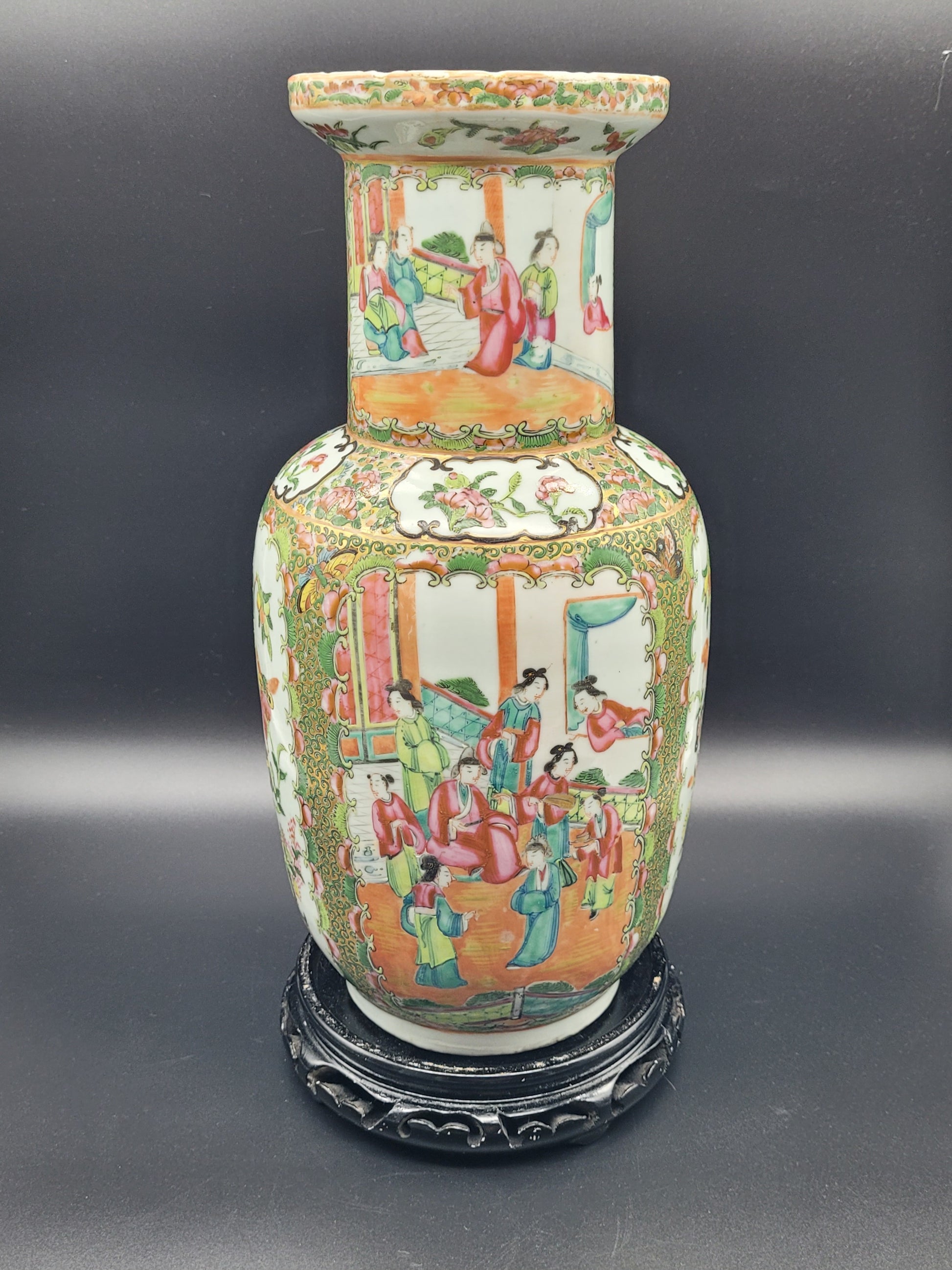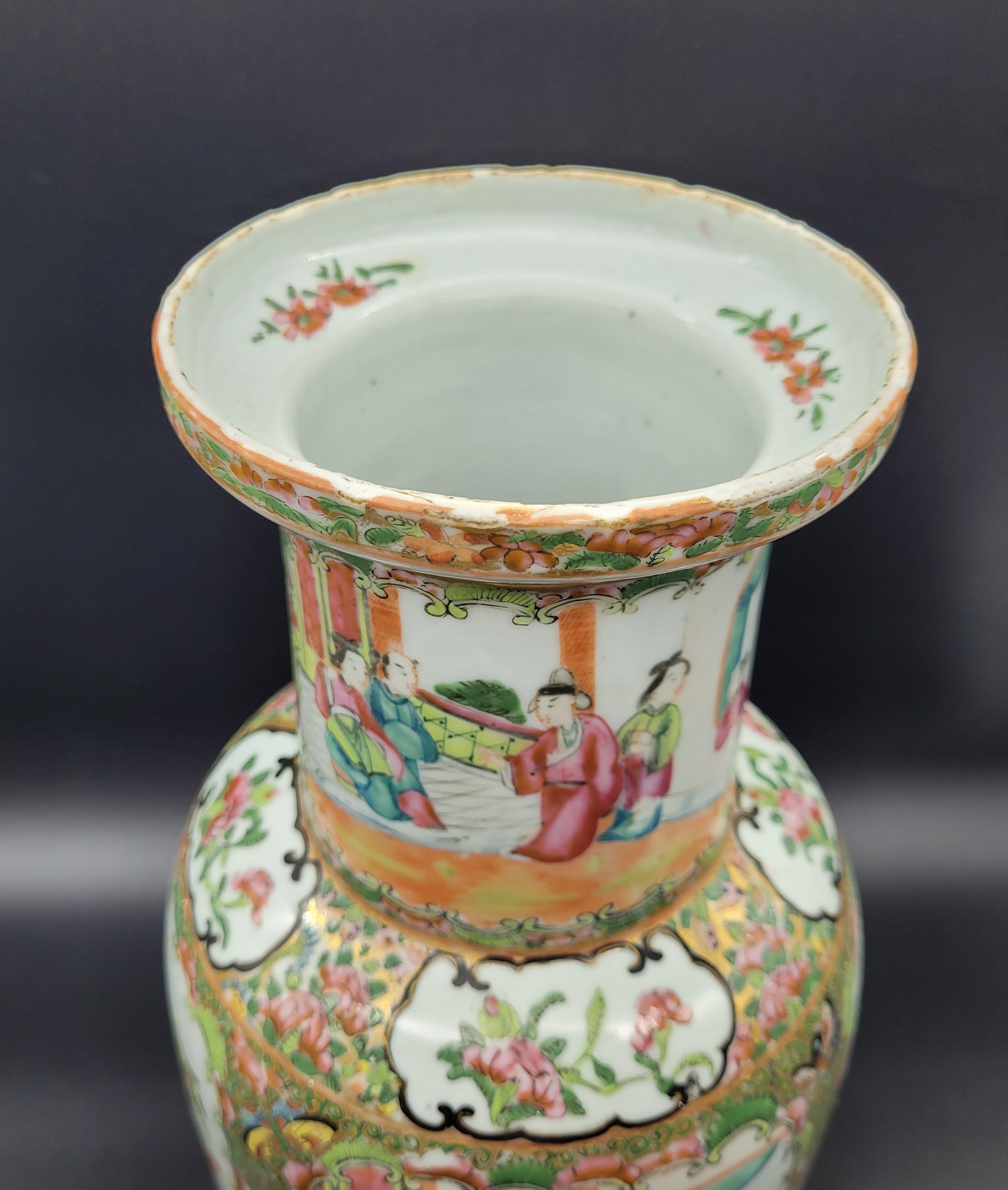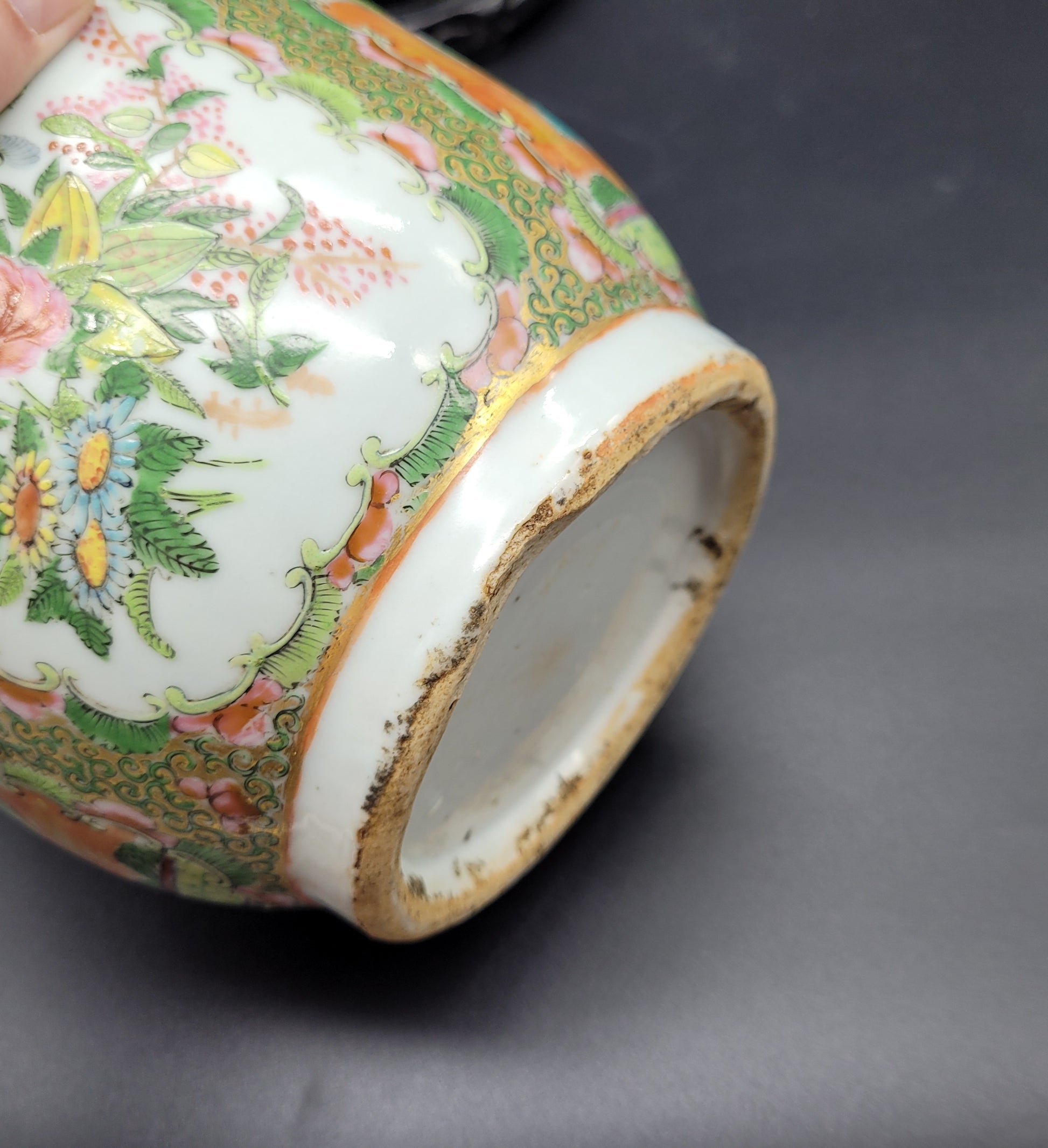KB Antiques & Jewellery
Antique Chinese 19th Century Famille Rose Vase
Antique Chinese 19th Century Famille Rose Vase
Couldn't load pickup availability
Beauitful big late 19th century famille rose mallet type vase
Extremely well hand decorated comes with carved wooden stand
Overall Condition is very good there is a few flea bites on the rim and a small star crack to the base ( SEE PHOTOS )
Height : 39cm ( with stand ) 36cm ( without stand )
Any Questions Welcome
CHECK OUT MY OTHER ITEMS FOR SALE !!!!!!!!!!!!!!
What is Famille Rose Porcelain?
The term famille rose (meaning of the “pink family”) refers to porcelain glazed with enamels in a predominantly pink, white, yellow, and green color palette. The term originated with a French scholar in 1862 and has been used by scholars of all nationalities. While it is important to note that other, more specific, terms originate from Chinese that describe these same wares, famille rose is a blanket term commonly used by auction houses, antique dealers, and in older scholarly publications. These terms have overlapping and been interchangeable for some time, so it can help to unpack them a little.
Famille rose wares began to emerge in quantity by the early 18th century. At the end of the 17th century, firing techniques developed allowing for pink, white, and opaque yellow enamels to be added to the existing color palette of green, black, translucent yellow, iron red, and underglaze blue. In China, these wares were described early on as yangcai, meaning foreign colors, due to the European influence that initially introduced them via Jesuits visiting the imperial court.
Other Chinese terms include falangcai, which refers to wares in this new palette that originated in the imperial workshops, and fencai, meaning powder colors, which were falangcai enamels of slightly different compositions including iron powder and lead arsenate, combined to make opaque white enamel. The exact technical definitions of these terms and origin dates are the subject of ongoing scholarship, and the two can be challenging to differentiate.
